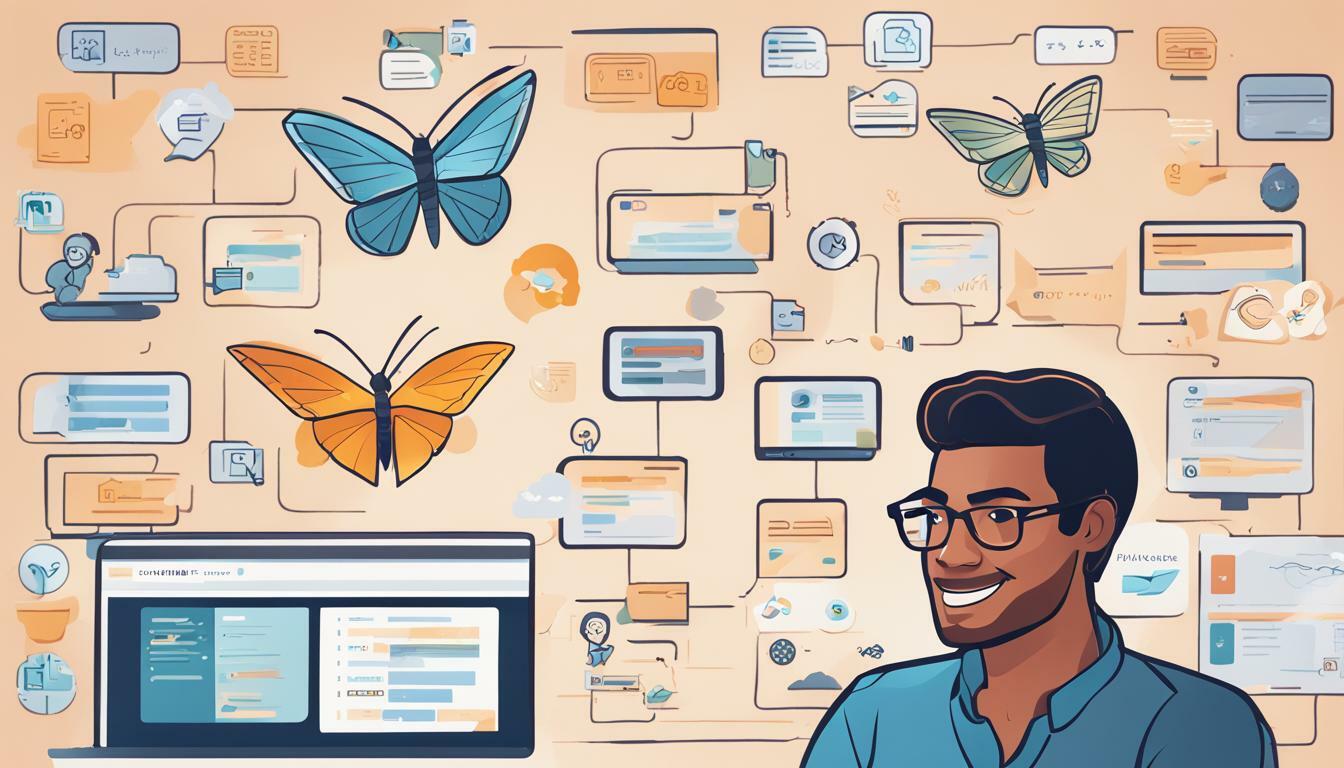
Welcome to our comprehensive guide on Dart and Flutter development best practices. Whether you’re a seasoned developer or just starting, we’ll provide you with the tips and techniques necessary to create apps with finesse. By following our guidelines, your app development experience will be optimized for efficiency and maintainability.
When developing with Dart and Flutter, it’s crucial to follow coding guidelines to keep your code clean and error-free. We’ll share with you some key tips for writing efficient code and creating apps that are user-friendly. Our focus is on providing tips that will help you strike a balance between performance, aesthetics and functionality.
Understanding Dart Coding Guidelines
Following coding guidelines is crucial for writing clean, maintainable code in Dart. In this section, we’ll explore the best practices for Dart development.
Dart Coding Guidelines:
| Guideline | Description |
|---|---|
| Use camelCase for variable and function names | CamelCase makes it easy to read long variable names and function names. It also aligns with the Dart style guide. |
| Use final and const where possible | Using final and const makes code more efficient and less prone to errors. Use final for variables that won’t change and const for static values. |
| Avoid using var for type inference | While var can save time, it makes code less readable and harder to maintain. Always declare the type of variables. |
By following these guidelines and others in the Dart style guide, you can create code that is easy to read, maintain, and share.
Unleashing the Power of Flutter Development
Flutter development best practices involve optimizing performance, enhancing user experience, and creating stunning UI/UX. Let’s explore some techniques that can help you achieve these goals:
Use Stateless Widgets
One of the primary benefits of Flutter is its ability to create performant user interfaces. One way to achieve this is by using stateless widgets. These widgets are immutable and cannot be redrawn; hence, they are much faster than stateful widgets. For UI elements that do not change over time, use stateless widgets to boost performance.
Implement Bloc Pattern for State Management
The Bloc pattern is a popular state management technique in Flutter development. It involves using streams to manage state within your application. By separating your presentation logic from your business logic, this pattern can help you build more scalable and maintainable apps. It also makes it easier to implement code reusability and testability.
Minimize Widget Rebuilding
Rebuilding Flutter widgets can significantly affect your app’s performance. To minimize rebuilding, use widget keys to identify when a widget needs to be updated. You can also use the const constructor to avoid unnecessary rebuilds.
Optimize Images
Images can have a significant impact on your app’s performance, particularly on low-end devices. Use compressed images and cache them where necessary. You can also lazy-load images to improve the user experience and reduce the initial load time.
Apply Generic Type Annotations
When using Dart, generic type annotations can help you write more maintainable and readable code. By specifying the type of data, you can detect potential errors at compile-time, making your code more robust. Apply generic type annotations to improve your code quality.
By incorporating these Flutter development best practices, you can create high-quality, performant, and beautiful apps that impress users. Put these techniques to work in your next project and take your Flutter skills to the next level.
Dart and Flutter Development Tips
Developing with Dart and Flutter requires following coding guidelines and utilizing best practices. In this section, we will provide additional tips for combining Dart and Flutter development to build robust applications.
Organizing Your Code
One of the most crucial tips for combining Dart and Flutter development is organizing your code effectively to ensure scalability. Creating separate files and folders for different components of your application can make it easier to maintain and update your codebase. Consider using folders for things like models, services, and widgets.
Another approach to organizing your code is separating it into reusable packages. This can help streamline the development process and make it easier to iterate on different parts of your application.
Managing State
Managing state is an integral part of developing in Flutter. Consider using packages like Provider or BLoC to effectively manage and update state throughout your application.
When working with state, it’s important to minimize unnecessary rebuilds of your widgets. Use the shouldRebuild property to ensure widgets only rebuild when necessary.
Testing Your App
Testing is a critical component of building high-quality applications. Consider using the built-in Flutter testing framework or packages like Mockito to test your application’s functionality and ensure it’s free from errors and bugs.
When testing, focus on unit tests to test individual pieces of functionality and integration tests to test the interaction between different components of your application.
Conclusion
By implementing these Dart and Flutter development tips, you can streamline your development process and build robust and scalable applications. Organize your code, effectively manage state, and test your app to ensure it’s error-free and performs optimally.
Cutting-Edge Techniques for Fluttering with Finesse
As you continue to build with Dart and Flutter, you may want to incorporate some more advanced techniques to take your app development skills to the next level. Here are some cutting-edge techniques that can help you flutter with finesse:
- Internationalization: Expand your app’s reach by adding support for multiple languages and cultures.
- Animation: Bring your app to life with smooth and engaging animations.
- Platform-specific features: Take advantage of unique features on iOS and Android platforms to enhance the user experience.
Let’s take a closer look at each of these techniques:
Internationalization
Adding support for multiple languages and cultures can help your app reach a wider audience. Flutter provides built-in support for internationalization, so you can easily create translations for your app’s text, date and time formats, and other features. Here are some steps to get started:
- Use the
intlpackage to handle translations. - Create message files for each language you want to support.
- Update your app’s code to use the translated messages.
By following these steps, you can make your app accessible to users around the world.
Animation
Animations can add a touch of magic to your app, making it more engaging and memorable. Flutter provides a powerful animation framework that allows you to create complex animations with ease. Here are some tips for using animation effectively:
- Use ease-in and ease-out curves to create natural-looking animations.
- Use the
AnimatedWidgetclass to simplify animation code. - Experiment with different animation types, such as scale, rotation, and opacity.
By incorporating animation into your app, you can create a more immersive experience for your users.
Platform-Specific Features
iOS and Android platforms offer unique features that can enhance the user experience. Flutter allows you to access these features through platform channels, which lets your Flutter app interact with native code on the device. Here are some examples of platform-specific features you can use:
| Feature | iOS | Android |
|---|---|---|
| Notifications | Apple Push Notification Service | Firebase Cloud Messaging |
| Camera | AVFoundation | Android Camera API |
| GPS | Core Location | Google Play Services Location API |
By leveraging these platform-specific features, you can create a richer and more responsive app.
Conclusion
By following the best practices outlined in this guide, you can take your Dart and Flutter development skills to the next level and create stunning apps with finesse. Whether it’s adhering to coding guidelines, optimizing performance, or incorporating advanced techniques, there are endless possibilities with Dart and Flutter development.
So what are you waiting for? Start fluttering with finesse today and embrace the power of Dart and Flutter development. With these tools at your disposal, the possibilities for app creation are limitless.





